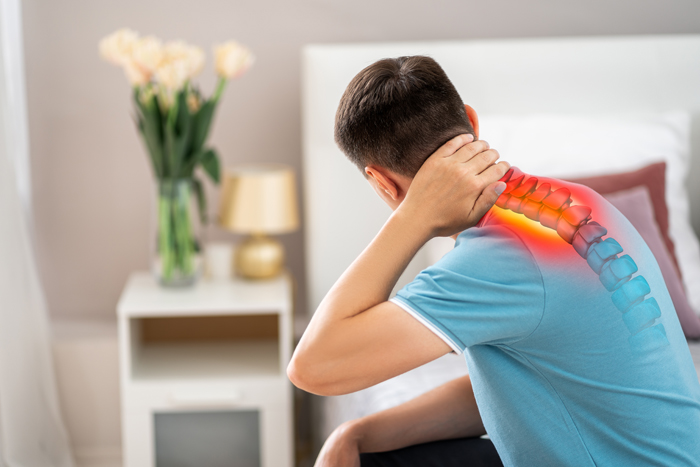When Neck Pain Reaches Your Shoulder Blades
Neck pain doesn’t always stay in the neck. Sometimes it spreads to the shoulder or scapula, causing stiffness, aching, or even nerve-related symptoms.
Why Neck Pain Often Radiates to the Shoulders
The neck is more than just bones stacked together. It holds muscles, ligaments, discs, and nerves that connect directly to the shoulders and arms. When something goes wrong in the neck, pain and tension often travel to the scapula or shoulder region.
What Usually Causes Neck and Shoulder Blade Pain
Several conditions can trigger this type of pain, ranging from short-term strains to longer-term changes in the spine:
- Muscle tension and poor posture – long hours on computers or mobile devices
- Cervical disc problems (slipped disc in the neck) – disc material pressing on nerves
- Cervical spondylosis (arthritis in the neck) – wear-and-tear in the neck joints
- Nerve compression (radiculopathy) – irritation of nerves leading to the arms and shoulders
- Injuries or whiplash – sudden jerking of the neck from accidents
Signs It’s More Than Just a Stiff Neck
Mild stiffness is common, but some warning signs mean you should see a doctor:
- Pain that lasts more than a few weeks
- Pain radiating into the shoulder, arm, or scapula
- Tingling, numbness, or weakness in the arms or hands
- Severe stiffness after an accident or fall
- Pain that interferes with sleep or daily activities
How Doctors Pinpoint the Cause of Neck and Shoulder Pain
Neck and shoulder pain can mimic one another, so accurate diagnosis is important. At a consultation, assessment may include:
- Physical examination of movement, strength, and reflexes
- Imaging tests such as X-rays, MRI, or CT scans
- In selected cases, diagnostic injections to identify the pain source
Treatment Options for Neck and Shoulder Pain
Not every case needs surgery. Treatment usually begins with conservative measures and progresses if symptoms don’t improve:
- Lifestyle changes: posture correction, ergonomic adjustments
- Physiotherapy: stretching, strengthening, and guided exercises
- Medications: to reduce pain and inflammation
- Injections: for pain relief and diagnosis
- Surgery: considered if nerves or the spinal cord are compressed and symptoms persist
Living with Neck and Scapula Pain
Neck and shoulder pain can make everyday activities, from looking at a screen to carrying groceries, a challenge. Taking breaks from screens, adjusting workstations, and staying active with gentle exercise can help manage symptoms. Still, persistent or worsening pain should always be checked.
Book a Consultation for Ongoing Neck or Shoulder Pain
If you’re struggling with neck pain that spreads to your shoulders or scapula, schedule a consultation at Mash Spine & Orthopaedics for a detailed assessment and tailored treatment plan.





